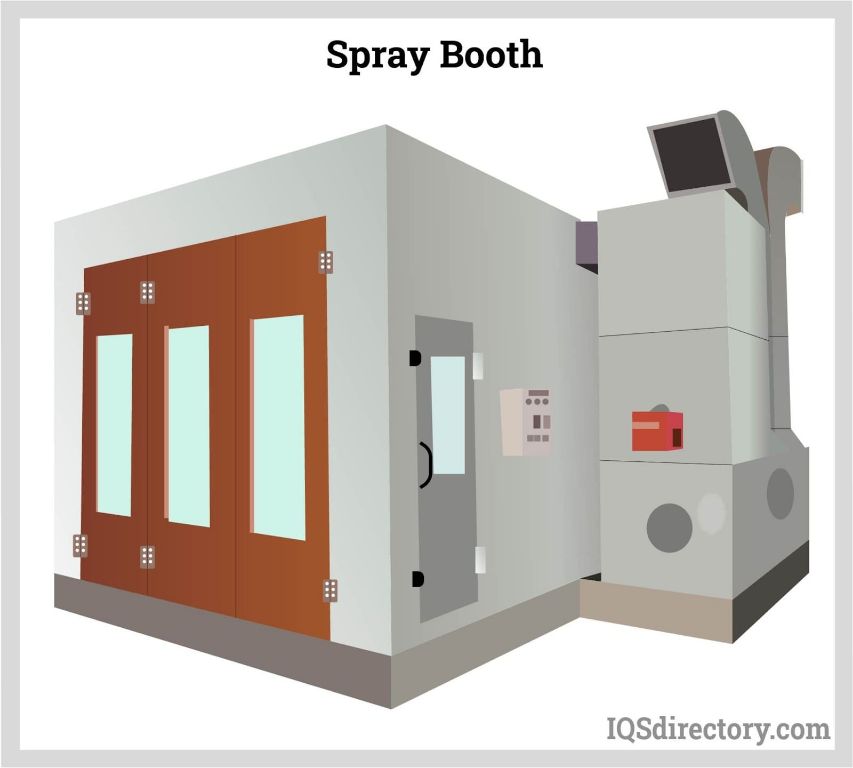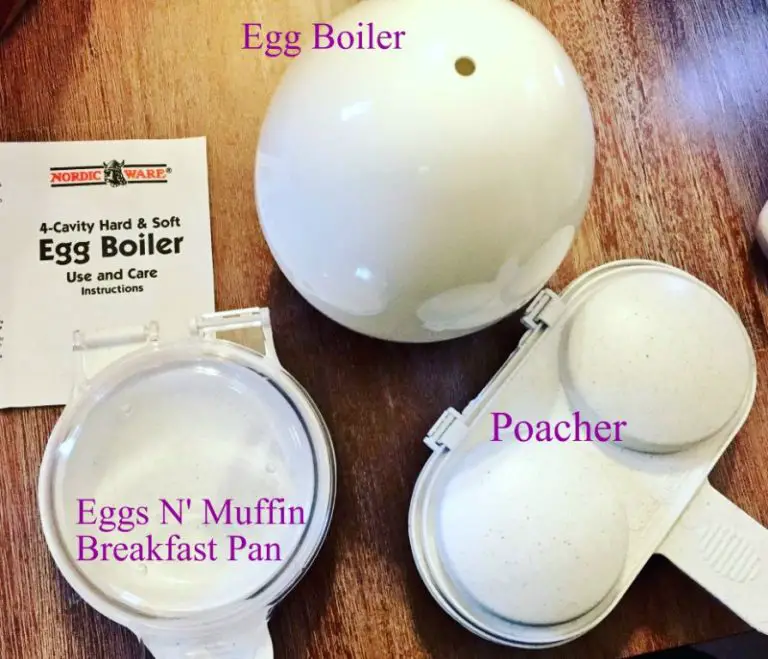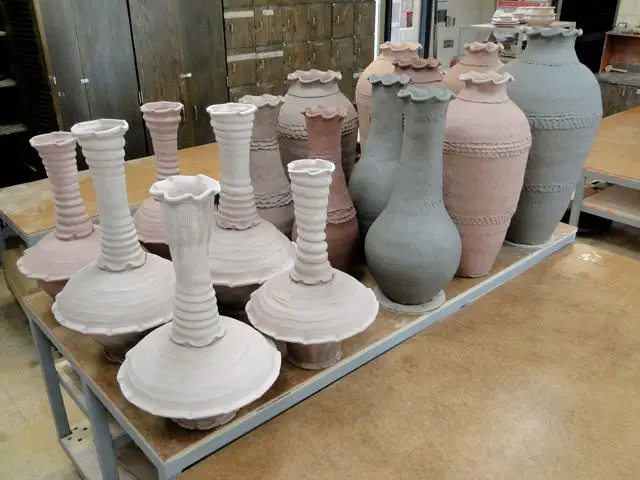What Are The Requirements For A Spray Booth?
A spray booth is a power-ventilated enclosure used to perform spray coating operations while confining and limiting the escape of overspray, fumes, vapors, and residual particles. The purpose of a spray booth is to provide a safe and controlled environment for applying coatings, while also protecting workers and minimizing the impact on the surrounding area.
Spray booths have certain key requirements that need to be met for safe operation, as outlined by OSHA and NFPA standards. These main requirements involve proper ventilation, fire protection systems, adequate lighting, electrical safety features, suitable flooring, sufficient workspace, and ongoing maintenance and training. Spray booths must also be certified for compliance by an accredited testing company before being put into service.
This article provides an in-depth look at the main requirements for industrial spray booths to operate safely and effectively.
Ventilation
Proper ventilation is a key requirement for spray booths to control hazards and protect workers. Spray booths must have mechanical ventilation systems that provide adequate airflow to capture and exhaust fumes, vapors, mists, residues, and dusts generated from spray finishing operations (OSHA, n.d.a).
The ventilation system must maintain negative pressure within spray booths to prevent the escape of contaminants into work areas. All air from spray booths should be exhausted outside and away from air intakes, doors, windows, and other openings that can allow reentry of contaminants (OSHA, n.d.a).
The ventilation system must have the capacity to confine and remove flammable vapors, mists, or powders to a safe location to reduce explosion hazards (OSHA, n.d.a). The system should provide at least 100 feet per minute of airflow across all areas of the spray booth to capture overspray (Spray Systems, n.d.a).
Ventilation systems must also effectively filter volatile organic compounds (VOCs) and hazardous particulate matter from exhaust air using high-efficiency particulate air (HEPA) filters or water wash systems before release into the atmosphere (Spray Systems, n.d.b). This helps minimize environmental pollution.
Regular inspection and maintenance of the ventilation system is crucial to ensure it continues operating as designed to provide the required airflow and filtration (Spray Systems, n.d.c).
Fire Protection
Fire protection is a critical requirement for spray booths to ensure safety. Spray booths use flammable materials, so they must be constructed of fire-resistant materials. The National Fire Protection Association’s (NFPA) NFPA 33 standard states spray booths should have noncombustible floor, wall and ceiling surfaces. Common fire-resistant materials include steel, concrete, brick and fire-retardant treated plywood.

In addition to fire-resistant construction, NFPA 33 mandates automatic fire suppression systems for spray booths. The most common type is a wet chemical system that discharges an extinguishing agent onto a fire. This quickly suppresses the fire before major damage can occur. Fire alarms should also be installed to provide early warning. Portable Class B fire extinguishers must be kept near spray booth exits as well.
Proper fire protection, including fire-resistant materials, suppression systems and extinguishers, is essential for safe spray booth operation. Fire protection systems minimize the risk of a fire and help quickly extinguish it if one does occur.
Lighting
Adequate lighting is crucial for spray booth operations. Workers need sufficient illumination to properly inspect paint finishes and identify any defects. The industry standard is 100-150 footcandles at a 3-foot height, allowing for proper grading of color and finish quality (source). Lighting should be present around the operator’s knees, head, and above at relatively equal intervals for optimal visibility (source).
All lighting fixtures in a spray booth must be explosion-proof to prevent igniting flammable solvents or vapors. Using explosion-proof fixtures certified for use in hazardous locations is crucial for safety (source). Maintenance crews should routinely inspect lighting to identify any damage that could impact the explosion-proof rating.
Electrical
Spray booths require electrical systems designed specifically for hazardous locations. According to NFPA 33, the area within 5 feet horizontally and 3 feet vertically of spray booth openings is considered a Class 1, Division 1 location, while the area 5-8 feet around openings is Class 1, Division 2 (NFPA 33, 2018).
All electrical fixtures in hazardous locations must be approved for those locations. Light fixtures must be sealed to prevent ignition sources from entering (Global Finishing, 2013).
Proper grounding is critical, and all metal parts must be grounded to reduce static electricity buildup. Wires should be in rigid conduit. An emergency shut-off switch must be provided to immediately stop spraying operations (NFPA 33, 2018).
Floors
According to NFPA 33, spray booth floors must be constructed of noncombustible material that can withstand common solvents and foot traffic (National Fire Protection Association, 2021). Floors are often constructed of concrete or steel, or heavy gauge galvanized metal over tongue-and-groove wood planking. Durability is key, as floors are exposed to paint, solvents and heavy foot traffic. They must be able to sustain the weight of the spray booth equipment and ventilation units without sagging or warping.
Given the fire hazards associated with finishing processes, NFPA 33 mandates certain properties for spray booth flooring. Floors must be graded to contain spills and equipped with noncombustible trenches to facilitate cleaning and waste removal. Joints between booth walls and floors shall be coved and sealed to prevent the accumulation of residue. Booth floors must also have noncombustible troughs or gutters for collecting flush cleaning liquids. Any wooden floor coverings, such as duckboards, must be fully coated to render them nonabsorbent and noncombustible. Likewise, walkways must have noncombustible surfaces.
In summary, properly designed floors are essential for safety and function in spray booths. NFPA 33 provides specific guidelines on materials, drainage, trenches and sealing to help mitigate fire risks and enable routine cleaning and maintenance
Workspace
The workspace inside a spray booth needs to be adequately sized and organized for efficient workflow. According to Essential Design Elements of a Spray Booth #4, the booth should provide ample room for workers to maneuver and complete spraying tasks comfortably. The workspace dimensions should account for the size of the objects being painted as well as the range of motion needed for spraying. There should be enough space to set up work tables or equipment as needed.
The workspace also needs to have an organized layout to support an efficient process flow. Workers should be able to smoothly transition between preparing surfaces, spraying paint, and transferring finished pieces out of the booth. Adequate clearance around doors and openings prevents collisions or accidents. Keeping frequently used tools and materials nearby reduces wasted motion and time. As one example, IQS Directory suggests positioning guns, paint, and cleaning supplies within easy reach inside downdraft spray booths.
Careful planning of the workspace size, shape, and organization enables a more ergonomic and productive spraying operation.
Maintenance
Proper maintenance is critical for spray booth safety and performance. Some key maintenance requirements include:
Filter changes – Booth filters should be checked frequently and replaced when overloaded with overspray particles. Most manufacturers recommend replacing filters every 1-3 months or when airflow is reduced by 20%. Clogged filters are a fire hazard. Changing filters regularly also improves ventilation and air quality (Global Finishing, 2020).
Equipment inspection – All electrical components, lighting, ducting, fans and other equipment should be thoroughly inspected on a routine basis. Check for any damage, leaks, blockages or other issues. Spray booth systems contain many moving parts that require vigilant monitoring (Spray Systems, 2022).
Cleaning schedule – Booths should be swept and wiped down daily to prevent buildup of overspray, dust and debris. A deep clean of walls, floors, lights and all surfaces should occur regularly such as monthly or quarterly. Cleaning prevents material accumulation that could ignite or combust (Paint Booths, 2022).
Training
Proper training for spray booth operators is critical for maintaining safe working conditions and high quality results. Operators should be trained on proper use procedures and safety protocols before operating a spray booth.
According to the Finishing Academy, comprehensive training programs like their online modules teach spray booth operators the fundamentals like airflow, filtering, and best practices for spray technique to get optimal finishes (Paint booth training website). Proper technique helps minimize overspray and produce consistent, high-quality finishes.
Operators also need to understand important safety protocols. The American Wood Finishers’ Institute provides a 3-day Spray Operator Training workshop focused on safe operating procedures, proper use of personal protective equipment, and how to work safely with hazardous materials (Spray Operator Training (SOT 701)). Ongoing training helps reinforce safety best practices.
With comprehensive training on equipment use, technique, and safety protocols, operators can maximize their productivity while minimizing health risks.
Certification
Spray booths must meet all applicable fire, health, and safety codes in order to operate legally and safely. This requires obtaining proper certifications and permits from authorities.
Spray booths must comply with NFPA 33 or the International Fire Code (IFC). These codes dictate design, construction, ventilation, fire suppression, and other requirements (OSHA). When constructing a new spray booth, the finished booth must be certified to comply with the latest NFPA or IFC code.
In addition to certifying new construction, existing booths must maintain compliance through regular inspections and permitting. Local fire marshals typically perform annual inspections to ensure continued adherence to codes. Fire suppression systems, ventilation, and other components must function properly. Some municipalities may require an annual permit or certification for existing booths (Markel Insurance).
Documentation of certifications and inspection records should be maintained. Being prepared for inspections and meeting codes protects workers and helps avoid citations or fines for non-compliance.





